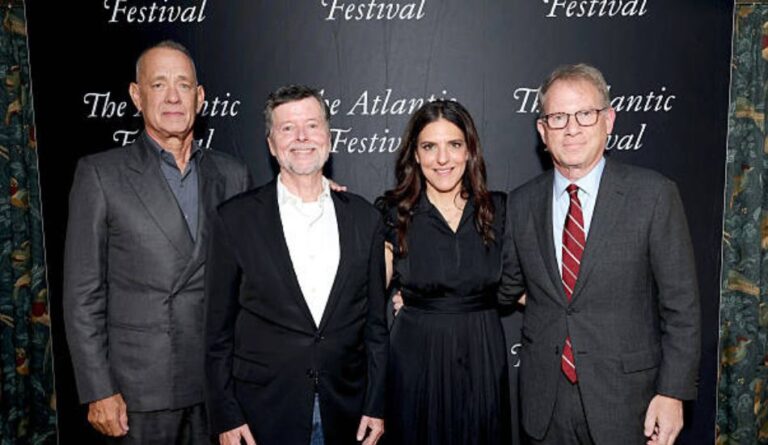Who is Mikiko Kitano? The Untold Story Behind Takeshi Kitano’s Life and Legacy
Introduction: The Mystery Woman Beside a Japanese Legend
When you think of Japanese cinema, one name inevitably stands out — Takeshi Kitano, the man who seamlessly blended comedy, crime, and art into a single iconic career. But behind this celebrated filmmaker and actor, there was a woman who shared nearly four decades of his life: Mikiko Kitano. While Takeshi basked in the limelight, Mikiko chose a quieter path, one marked by privacy, dignity, and unwavering support.
This article explores who Mikiko Kitano really is, her early life, marriage, family, and her connection to the legendary “Beat Takeshi.” It also dives into topics surrounding Takeshi Kitano’s Yakuza-themed films, his net worth, best movies, and the family they built together.
Early Life and Background of Mikiko Kitano
Mikiko Kitano was born in 1951 in Osaka Prefecture, Japan. She grew up in post-war Japan, a period that saw rapid modernization and cultural shifts. Information about her early years is limited, reflecting her lifelong preference for privacy. However, some records indicate she studied at Mukogawa Women’s University Junior College Division, suggesting a well-rounded education and a stable upbringing.
Unlike her husband, who would later become one of Japan’s most recognized entertainers, Mikiko did not pursue a public career in media or arts. Her reserved personality contrasted sharply with Takeshi Kitano’s flamboyant and multifaceted persona.
Meeting Takeshi Kitano — A Fateful Connection
Mikiko met Takeshi Kitano sometime in the late 1970s when he was rising in popularity as part of the comedy duo Two Beat. Takeshi was known for his quick wit and rebellious humor, which often clashed with the conservative norms of Japanese entertainment. Mikiko, calm and grounded, complemented him perfectly.
Their relationship blossomed away from the cameras, and the couple married in 1980. The union symbolized the merging of two very different worlds — one public, one private — but both equally committed to building a family together.
Family Life: Raising Atsushi and Shōko Kitano
Mikiko and Takeshi had two children — Atsushi Kitano (born in 1981) and Shōko Kitano (born in 1982).
Their son Atsushi largely stayed out of public view, much like his mother. Some media outlets have mentioned his occasional involvement in creative projects, though details remain scarce.
Their daughter Shōko Kitano, however, briefly pursued a music career in the 1990s, releasing songs before stepping away from the entertainment world. Her decision to leave the spotlight mirrors the family’s recurring theme of privacy despite immense fame surrounding Takeshi.
Who is Takeshi Kitano? A Legend in Japanese Cinema
Before we understand Mikiko’s place in Takeshi’s story, it’s essential to grasp the magnitude of Takeshi Kitano’s career.
Born on January 18, 1947, in Tokyo’s Adachi ward, Takeshi began his career as a comedian. He later transformed into a filmmaker, screenwriter, novelist, painter, and television host, earning international acclaim for his minimalist directing style and raw storytelling.
His films often explore themes of violence, loneliness, and existential reflection — elements heavily featured in Yakuza-centered narratives that would define his career.
Takeshi Kitano and the Yakuza Film Legacy
Takeshi’s fascination with the Yakuza, Japan’s organized crime syndicates, shaped some of his most iconic films. Titles like Violent Cop (1989), Sonatine (1993), and the Outrage trilogy (2010–2017) depict the complex codes, honor, and brutality of the Yakuza world.
Unlike typical gangster films, Kitano’s movies focus less on violence for spectacle and more on the psychological tension within the criminal hierarchy. His portrayal of Yakuza characters—cold, stoic, and quietly self-destructive—earned him praise from international critics.
Interestingly, the contrast between his dark film roles and his comedic TV persona mirrors his real-life duality: a public entertainer married to a woman who valued privacy and steadiness.
Mikiko Kitano’s Life Behind the Scenes
Throughout Takeshi’s climb to global fame, Mikiko remained largely behind the scenes. She rarely appeared in interviews or events, preferring to maintain the family’s personal life away from public scrutiny.
Her quiet resilience came to light during Takeshi’s near-fatal motorcycle accident in 1994, which left him with severe head injuries and facial paralysis. While Takeshi went through months of rehabilitation, Mikiko stayed by his side, providing support during one of the toughest periods of his life.
Her loyalty during that period became a defining element of their marriage — a behind-the-curtain story of devotion few people knew about.
Challenges and Separation
In 2019, Japanese media reported that Takeshi Kitano had divorced Mikiko after nearly 40 years of marriage. The separation marked the end of one of Japan’s most enduring celebrity marriages.
Reports suggested that Takeshi left the marriage settlement amicably, granting Mikiko a fair share of his earnings. Despite the split, there was no public bitterness between them — another reflection of Mikiko’s composed and private nature.
While Takeshi continued his professional endeavors, Mikiko reportedly continued to live quietly, away from media attention, content with the life she had built.
Atsushi Kitano – The Private Son
Atsushi Kitano, their son, has maintained an even lower profile than his mother. Born in 1981, Atsushi’s presence in public records is minimal. There’s speculation that he works in a non-entertainment field, possibly in media or management, but no verified details exist.
Shōko Kitano – Following in Her Father’s Footsteps (Briefly)
Shōko Kitano, born in 1982, pursued a short-lived music career in the 1990s. Despite being Takeshi’s daughter, she distanced herself from the celebrity spotlight after a few years, possibly valuing the privacy that defined her upbringing.
Takeshi Kitano’s Net Worth
Takeshi’s career spans over five decades across multiple mediums — television, film, literature, and art. His estimated net worth ranges between $20 million to $30 million, sourced from acting, directing, TV appearances, and art exhibitions.
He’s also the founder of Office Kitano, a production company responsible for many of his creative projects. His diverse income reflects his reputation as one of Japan’s most influential cultural figures.
Takeshi Kitano’s Best Movies
Some of Takeshi’s best-known works include:
Sonatine (1993) – A contemplative look at Yakuza life, blending dark humor with existential reflection.
Hana-bi (1997) – A masterpiece that won the Golden Lion at the Venice Film Festival, merging art, love, and violence.
Outrage Trilogy (2010–2017) – A brutal and stylized exploration of organized crime, power, and betrayal.
Brother (2000) – A cross-cultural Yakuza film set in Los Angeles, merging Japanese crime with American gangster tropes.
Each film highlights Takeshi’s mastery of minimalism and storytelling — a legacy that continues to inspire global filmmakers.
The “Broken Rage” Era
Some references mention Broken Rage Takeshi Kitano, an era or project title associated with his darker creative themes. While there’s no confirmed film by that exact name, the phrase likely reflects his signature artistic tone — one of controlled anger and introspection, characteristics mirrored in his post-accident work.
Related Names: Kiyoko Yokoi and Takeshi Kaneshiro’s Wife
Occasionally, search terms like Kiyoko Yokoi or Takeshi Kaneshiro wife appear alongside Mikiko Kitano’s name online. However, these are unrelated individuals. Kiyoko Yokoi has no verified connection to Takeshi or Mikiko, and Takeshi Kaneshiro is a separate actor altogether. These names likely appear due to keyword overlaps in Japanese entertainment discussions.
The Quiet Strength of Mikiko Kitano
In a world obsessed with celebrity exposure, Mikiko Kitano’s refusal to seek fame speaks volumes. Her presence in Takeshi’s life wasn’t defined by red carpets or interviews but by emotional stability, loyalty, and resilience through personal challenges.
She represents the silent pillar behind a global icon — a reminder that behind many great artists stand individuals who choose privacy over recognition.
Legacy and Reflection
While Takeshi Kitano continues to be celebrated for his artistry and influence on global cinema, Mikiko’s story remains that of quiet strength. Her life is a testament to the fact that significance doesn’t always come from fame. Sometimes, it’s built through unwavering support, patience, and the courage to live privately in a public world.
As the years pass, her name continues to appear in biographical accounts of Takeshi — not as a side note, but as a vital part of the narrative that shaped one of Japan’s greatest artists.
Final Thoughts
Mikiko Kitano may not have sought the spotlight, but her impact on Takeshi Kitano’s life and legacy is undeniable. Their marriage, spanning decades of artistic highs and personal struggles, tells a story of balance — between fame and privacy, chaos and calm, public life and personal devotion.
At Chopmagazine.com, we believe stories like Mikiko’s deserve to be told — because sometimes the most profound influences are those that stay behind the scenes.







